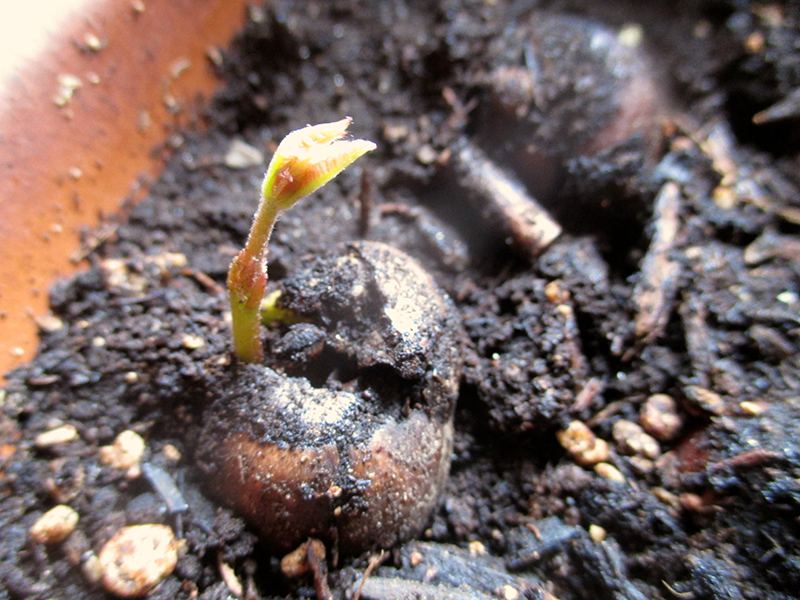WHO FEASTS: YOU, OR THE SQUIRRELS? NEW FINDINGS FROM HARVARD FOREST
What’s good for the squirrels, it turns out, isn’t so good for you and your pancakes. Who knew?
The same sugars in maple sap that make for a banner syrup year are depleted by maples when the trees put on a big crop of seeds. So-called mast years are boom times for animals, as maples whirl out an air force of helicopters fat with seed. But they are a bust for sappers, who have to boil off more water to produce a decent crop of syrup.

An acorn I sprouted last year from BT QURU 03 – the oak I am following at the Harvard Forest. Trees such as oaks and maples only produce large amounts of seed in so-called mast years. While these are bonanzas for the animals that eat them, researches have found mast years in maples mean less sugar in maple sap. So when the animals feast, we don’t!
In their new paper published in Forest Ecology and Management, Elizabeth Crone, associate professor of biology at Tufts University with post doctoral fellow Joshua Rapp found mast years deplete the carbohydrates in maples that would have gone into their sap. So closely tied were the two that boom seed years reliably proceeded bust syrup harvests in 17 years of maple syrup production they analyzed at 28 sites in Vermont.
In more work at the Harvard Forest, long term weather data and the access to 20 maples to follow through the seasons over successive years helped them see patterns emerge.
Put together with sap harvest records in Vermont, the connection became clear, as the two thought about the problem in terms of a resource budget. A tree only has so much energy – stored carbohydrates. If it uses that energy for a task – such as producing a mother lode of seed – there will be less in its sap.
“The resource budget model lays out the idea that trees need a certain amount of resources before they can flower and produce seed and once they do that, it takes multiple years to build that back up again,” Rapp said in a phone interview. “We were intrigued by the idea that we could track carbohydrate stores in trees by looking at their sap.”
The findings could help commercial producers predict when they will have a good syrup yield. “We like to say that one of the goals of basic research is to find something that one day might be useful in ways we don’t expect,” Crone said. Well, sure enough.
Meanwhile the feasting is underway at the Harvard Forest, where acorns that hit the ground with a thwap a few weeks ago and seeds on the maples are being devoured by animals, including squirrels, jays, deer, and chipmunks. Population booms of white footed mice have been proven to follow mast years, Crone notes.
Now is the gathering time. The skies above the pasture out my windows here at the forest are inscribed with the arcs of blue jays, flying across the field to oaks that line the lane up to the woods. In minutes, I see them flying back to the forest, an acorn wedged in their beak. Every morning as I make coffee, I watch the squirrels race down the split rail fence and leap into the maple out my kitchen window, where they devour seed after seed. Hanging upside down by their back legs while stuffing their mouth full of seeds with their two front paws is no problem for them.
This was not a mast year at the forest. So perhaps it’s time to stock up the woodpile at the sugar shack.


Leave a Reply